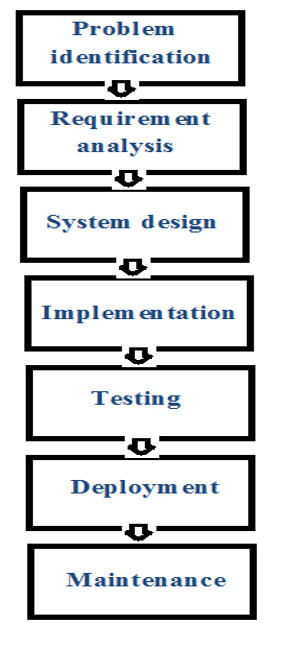Home »
Management Information System
Systems Development Life Cycle (SDLC) in Management Information System
In this tutorial, we will learn about the concept of Systems Development Life Cycle (SDLC) in Management Information System (MIS).
By IncludeHelp Last updated : June 01, 2023
Systems Development Life Cycle (SDLC)
SDLC stands for "Systems Development Life Cycle". SDLC refers to some steps/phases. As its name implies, if an expert develops a system through SDLC phases then the life of a developed system will be long.
It's a common phenomenon that any organization who wants to create a new system like machine, tool, logical or physical system, they create the system in such a way so that it will have its long life. To create a new system with its long life, an expert member (system analyst) follows some phases, these phases are known as SDLC phases.
The SDLC phases are as follows
- Problem identification
- Requirement analysis
- System design
- Implementation
- Testing
- Deployment
- Maintenance
Following figure shows the phases architecture of system development life cycle –

The detailed description of the SDLC phases is as follows –
1) Problem identification
This is the first and initial phase of SDLC. In this phase, the analyst, identify the actual problem for which they want a solution or create a system. The main concern of this phase is to recognize the real problem, if the problem is significant then the solution will be useful otherwise the solution will not be fruitful or it will be useless. If the experts work on the unrealistic problem then the solution is a waste of time, efforts, costs, etc. So, the problem must be realistic. To identify the problem, the analyst pays more attention to it.
2) Requirement analysis
After getting the problem identification, the next step is to work on requirement analysis. In requirement gathering, the analyst thinks about the solution to a problem. The requirement analysis is a detailed analysis which includes the answer to different questions like –
- What is the problem?
- What is the solution?
- Is solution feasible?
- How much time required solving the problem?
- How it will be resolved?
- How many resources will be required?
- Do we have sufficient resources to solve the problem?
- What kind of environment required by solution?
These are the few key questions for which an analyst finds real solutions. It shows the proper planning to get all solutions in our hands before solving the actual problem. Without proper planning or without knowing the actual problem to work upon its solution or implement a system always fails.
3) System design
System design is a blueprint of the solution. It is similar to before making a car the designers make a sketch of the car and then connect all parts of the car according to its predefined design.
The process follows the steps i.e. first creates logical design and gets design confirmation by top management or decision-makers of the company. During the designing process, if any changes required, analysts redesign it. The changes are easily done because the logical design reflects on papers. So, it is good to make the required changes on papers rather than the physical system. Changes in the physical system always make losses to the company in terms of wastage of time, resources, money, etc. So, logical design is the most important concept of designing. Once they confirm the logical design then the analyst looks after on its physical design.
Physical designing shows the proper connection of different components of the system according to its logical system.
4) Implementation
The implementation shows the final integration of the system. Implementation describes how the product will get converted it into its final form. There are different components associated with the system and during the implementation process, all parts of the system are linked with one another according to a proper plan so that they can work properly and fulfill the objective of the system.
5) Testing
Testing is a process to validate the objective of the system through various steps. It is a mechanism that makes sure that the system is working properly or not. After the implementation of the system, it is tested on different aspects. Different inputs are given and test the output accuracy. The system is also tested on different parameters like accuracy rate, system feasibility, system performance, load balancing, etc.
The testing phase is one of the most important phases of SDLC. Once, experts are 100% sure about the system’s smooth-running process, performance, accuracy, etc then only they forward it on the next phase.
6) Deployment
After successful testing of the developed system, it is deployed to the concern candidate or company for which it has designed. Deployment is a process to deploy the new one designed system at clients/customers end.
7) Maintenance
Maintenance is the last and one of the most important phases of SDLC. Maintenance of the system gives long life to the new system. After the successful deployment of the system at clients end, it is compulsory to maintain it from time to time. As, if any system maintains properly then the life cycle of the system increases and the organization can utilize the system for a long time which will be profitable to the companies.
Advertisement
Advertisement